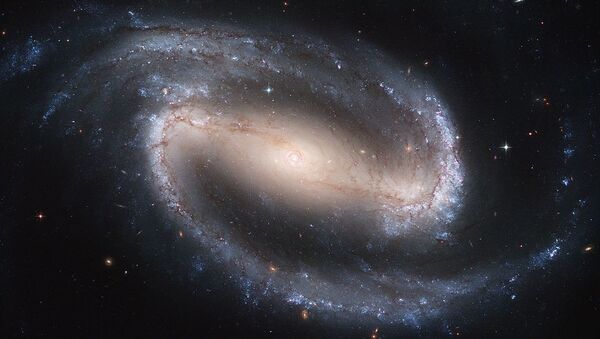According to the scientist, this could be a major breakthrough in fundamental physics and cosmology. The research data were published in Astronomy Reports magazine.
The birth of the Universe as we observe it is the most important scientific problem. Although the Universe is now heterogeneous, at birth, according to scientists, it consisted of completely homogeneous plasma. The Big Bang launched an expansion of the gradually cooling plasma, which instabilities led to the formation of the observed structure – galaxies and their clusters, stars and planets.
One of the most authoritative models explaining the genesis of instabilities and the emergence of the first stationary large-scale objects was proposed by famous Soviet physicist Yakov Zeldovich.
The model is based on the hypothesis of the primary collapse of large masses – massive gas clouds, like clusters of galaxies – which results in the formation of “Zeldovich pancakes.” Their shape is due to the fact that when a figure, different from the sphere, is formed, its smaller side always shrinks faster, thereby forming a “pancake.”
“We’ve obtained an approximate solution for the shape of the relict background spectrum after being scattered by plasma that rapidly shrinks in a flat layer due to self-gravity,” Gennady Bisnovatyi-Kogan explained.
The relict background is the radiation left after the cooling of the primary plasma, which fills the entire Universe. For astrophysicists, it serves as a kind of screen that, due to changes in its spectrum, allows recording events of the Universe formation period. It is the interaction of relict radiation with the rapidly contracting ionised substance of the “pancake” that leads to such distortions.
“Passing through the compression region, the background radiation has a slightly different shape than other possible distortions. If my calculations are confirmed when observing background fluctuations, this will support the Zeldovich model,” Gennady Bisnovatyi-Kogan said.
In the future, the scientists want to numerically simulate the bulk-comptonised spectra formed during the formation of “pancakes”. This will help clarify the shape of the calculated spectra. An increase in the equipment sensitivity is necessary to search for the form of deviations from the Planck spectrum in local regions of the sky, which is extremely important for further studying the relict background and determining the model for the large-scale structure formation.




